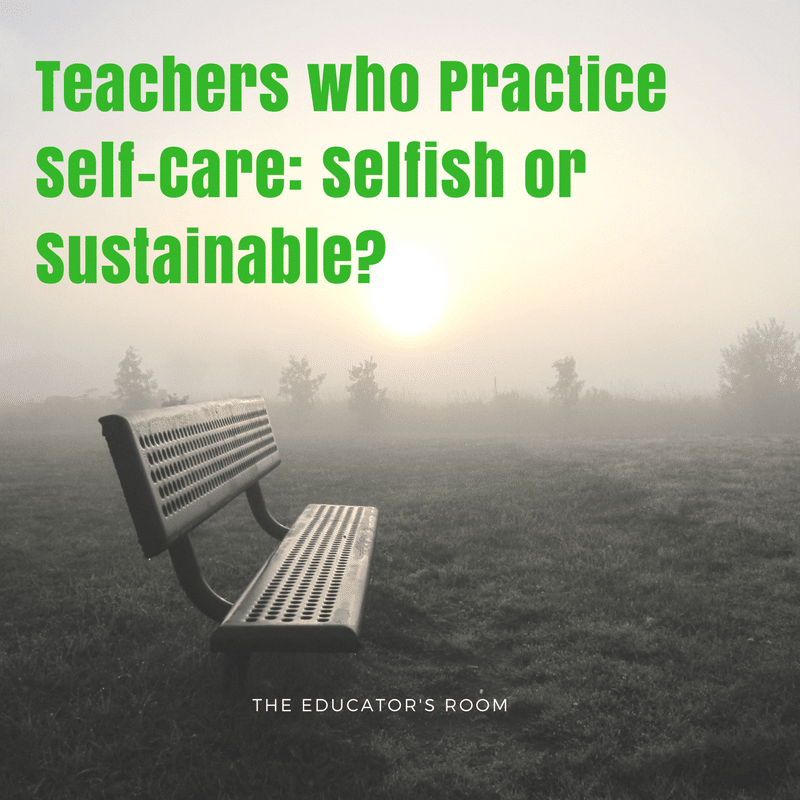Teacher burnout is a phrase that we hear all too often in the field of education, and it’s no wonder with all that teachers must juggle day in and day out. Most teachers take their work home: planning, grading and brainstorming well into the evening and on the weekend. Add those tasks to extra-curricular activities and other commitments, and you will find teachers who are stretched very thin. Just last week, Scott Miller wrote The Challenges of Mental/Emotional Health for Teachers, where he explains just how serious the effects of classroom stress can be. However, a self-care routine can be a therapeutic habit that helps manage these stresses.
By now, you’ve probably heard of “self-care,” as the phrase has become recently popular. Typically, however, we don’t associate the idea of self-care with teachers. In the field of education, where teachers are expected and encouraged to be completely selfless, one might ask: How can a self-care practice truly be utilized?
[bctt tweet=”a self-care routine can be a therapeutic habit that helps manage these stresses” username=”EducatorsRoom”]
How lack of self-care can affect our students
In June 2017, Education Week published the article, Happy Teachers Practice Self-Care, in which Madeline Will discusses how the practice of self-care can actually be beneficial to students. Will asserts, based on research, that “happy teachers lead to happy students.” Students are perceptive and can pick up on our social and emotional cues throughout the school day. If we are stressed and anxious, students will likely be able to see that and will thus be affected by it.
In her article, Will also interviewed Associate Professor of Education at the University of Virginia, Patricia Jennings, who said that “if you think about the classroom, it’s a very stressful context…You’re in a room with 20 to 30 kids. You have a goal to deliver a certain amount of content to help these students understand and apply it. You can’t leave this classroom, you have to be in this classroom for a certain amount of time. … That can be extremely frustrating.” Most classroom teachers can certainly relate to Jennings’ statements here. That is not to say that teaching not a rewarding job, but there are serious stresses that come along with it. So, we must learn how to manage that stress effectively to be successful.
Self-care for you
In our classrooms, it is up to us to set the tone and the classroom culture. When we are stressed, anxious and stretched too thin, it ultimately affects the learning environment. Self-care creates space for one to manage their own needs, thus reducing stress and boosting mood.
It is important to note, too, that self-care looks different for everyone. Self-care for you may be sitting down with a warm cup of tea, while for another self-care might involve playing guitar or listening to music. To start, consider which types of activities are re-charging and re-vitalizing for you. Then, try to set aside a few moments every day or every week to commit to yourself.
It can be difficult to get into a routine like this, especially for teachers. The busy lifestyle oftentimes seems like part the job and thus part of our identity. It can be hard to say “no”, even when you are overloaded, since we are expected to “do it all.” Remember that taking time out for yourself is not selfish but is vital to maintaining your mental health, your classroom culture, and your relationships with the people who you interact with every day.






